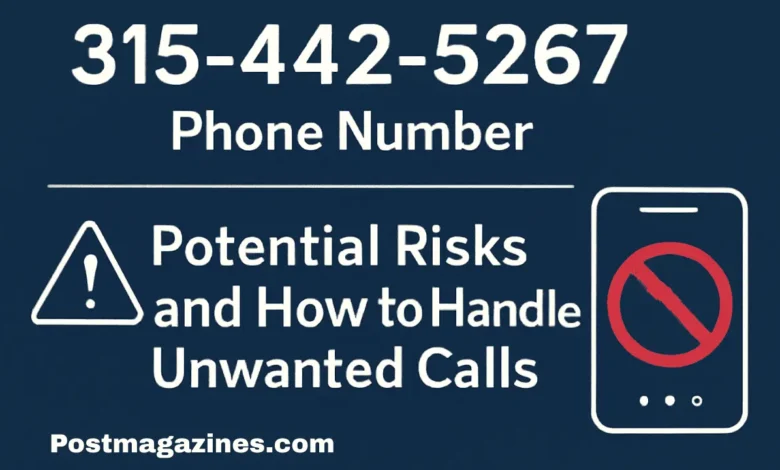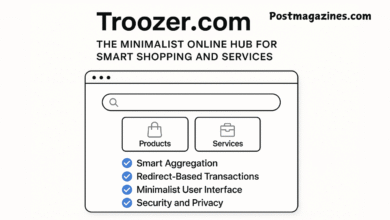315-442-5267 Phone Number: Potential Risks and How to Handle Unwanted Calls

In today’s interconnected world, receiving a call from an unfamiliar phone number is not uncommon. Whether it’s a potential telemarketer, a business trying to reach you, or even a scammer, unknown phone numbers can create a sense of unease. One such number that has raised concerns among users is 315-442-5267. This phone number, originating from the 315 area code, has been associated with a series of unsettling reports, including spam and scam activities. This article will explore the details behind the 315-442-5267 phone number, the risks it may present, and the steps you can take to protect yourself from unwanted calls.
What Is the 315-442-5267 Phone Number?
The 315 area code serves central and northern New York regions, including Syracuse, Utica, and Watertown. It is a standard North American area code and, like many other area codes, is often used by local businesses, government agencies, and individuals. However, this particular phone number, 315-442-5267, has caught attention due to multiple reports of spam, phishing attempts, and other forms of unsolicited contact.
While the phone number could be legitimate, many users have described experiences where they received robocalls or scam-related communication from this number. The calls often come with automated or silent messages, leaving individuals puzzled or concerned about the caller’s legitimacy.
Common Complaints About the 315-442-5267 Number
The most common issues that people have raised regarding the 315-442-5267 phone number include:
- Unsolicited Calls: Many people have reported receiving unsolicited calls from this number. Sometimes, the calls are silent, leading recipients to believe they are being harassed or that the call is an error.
- Robocalls: A significant portion of the complaints involves automated or robocalls. The automated voice typically delivers pre-recorded messages, often trying to push products, services, or requests for personal information.
- Phishing Attempts: A more concerning complaint associated with this number involves attempts at phishing. The callers may pretend to be from a legitimate organization, such as a bank or government agency, to extract sensitive information from the recipient. The goal is typically identity theft or financial fraud.
- High-Pressure Tactics: Some individuals report that the callers employ high-pressure tactics, creating a sense of urgency and urging individuals to act quickly. This could involve threats of fines, arrest, or other consequences if immediate action isn’t taken.
Given these reports, the 315-442-5267 phone number has earned a reputation as potentially dangerous or associated with scams.
Why Are Calls from 315-442-5267 a Problem?
There are several reasons why receiving calls from 315-442-5267 (or any similar unfamiliar number) can be problematic:
- Scammers Use Area Code Spoofing: Scammers often use “caller ID spoofing” to make it appear that they are calling from a local area code. By mimicking the 315 area code, they increase the likelihood of people answering the phone. Since the caller appears local, recipients may be more trusting or feel obligated to pick up the call.
- Phishing and Fraud Risks: If a scammer manages to engage a person over the phone, they might ask for sensitive information like Social Security numbers, bank account details, or credit card information. This can lead to identity theft, financial loss, or other types of fraud.
- Unwanted Solicitation: Not all calls from this number are necessarily fraudulent, but they can still be intrusive. Telemarketers and debt collectors often use persistent tactics, leading to frustrating experiences for individuals who want to enjoy a quiet phone line.
- Legal and Privacy Concerns: Some individuals might even have their data shared or sold to third parties, resulting in continuous unsolicited calls. This compromises one’s privacy and can lead to a breach of trust in businesses or organizations legitimately trying to contact them.
Steps to Protect Yourself from Unwanted Calls
You’re not alone if you’ve received a call from 315-442-5267 or any suspicious number. It’s essential to know how to handle these situations to protect yourself. Below are several actionable steps you can take:
Do Not Answer Calls from Unknown Numbers
If you don’t recognize the phone number, avoiding answering the call is always safer. Scammers often rely on people being curious about unfamiliar numbers, so simply ignoring the call is one of the best ways to protect yourself.
Use Call Blocking Features
Most smartphones today come equipped with built-in call-blocking features. These allow you to block specific phone numbers, such as 315-442-5267. Please don’t pick up the phone, preventing them from contacting you. Also, download third-party apps that provide additional blocking options and help identify spam numbers.
Report the Call to Authorities
If you suspect a call from 315-442-5267 is a scam, report it to the relevant authorities. In the U.S., you can report unwanted or fraudulent calls to the Federal Trade Commission (FTC) through their website. The FTC tracks scams and spam calls, helping prevent future fraud and alerting other individuals about potential risks.
Enable Do Not Disturb (DND) Mode
You can enable Do Not Disturb mode on your smartphone to prevent all incoming calls except those from your contacts or preferred numbers. This can help minimize interruptions and protect you from spam.
Verify the Caller’s Identity
If you decide to answer the call, be cautious about giving out personal information. If the caller claims to represent a legitimate business or organization, contact that company directly using a known, verified phone number. This will help you avoid falling into a scam.
Look Up the Number
If you receive a suspicious call, use a reverse phone lookup service to identify the number. There are many websites and apps available that allow you to check who is behind a particular number. This will help you determine if it’s a known scam or if other users have flagged the number.
The Importance of Being Aware of Phone Scams
While 315-442-5267 is just one example of a potentially suspicious number, it’s essential to recognize that phone scams are widespread and growing. Scammers are becoming increasingly sophisticated, often using caller ID spoofing, urgent messages, and high-pressure tactics to deceive people into providing sensitive information.
Awareness and vigilance are your first line of defense. Familiarize yourself with the signs of a scam, report suspicious numbers, and take steps to block or avoid calls from unknown sources. Doing so can help protect yourself and others from phone scams.
Conclusion
In conclusion, the 315-442-5267 phone number has garnered attention for its potential association with spam and fraudulent activities. While not all calls from this number are necessarily dangerous, the experiences of many individuals suggest a higher-than-normal risk of unsolicited calls, robocalls, and phishing attempts. By following best practices, such as avoiding unknown numbers, using call-blocking features, and reporting suspicious calls, you can protect your personal information and maintain your privacy.
Remember, if you feel unsure about a call or believe it could be a scam, it’s better to err on the side of caution. Always verify the caller’s identity, and don’t engage with the caller when in doubt. Your safety and security are of the utmost importance, and being aware of potential threats like 315-442-5267 can help safeguard both your information and peace of mind.
Frequently Asked Questions (FAQs)
Is the 315-442-5267 phone number legitimate?
It is difficult to verify without further context, but many reports suggest it could be associated with scams or phishing attempts.
How do I block this number on my phone?
Most smartphones offer call-blocking features in the settings. Alternatively, third-party apps like Truecaller can help you identify and block spam numbers.
What should I do if I think this number has scammed me?
If you suspect you’ve been scammed, immediately report the incident to the FTC and consider monitoring your financial accounts for any unauthorized activity.





